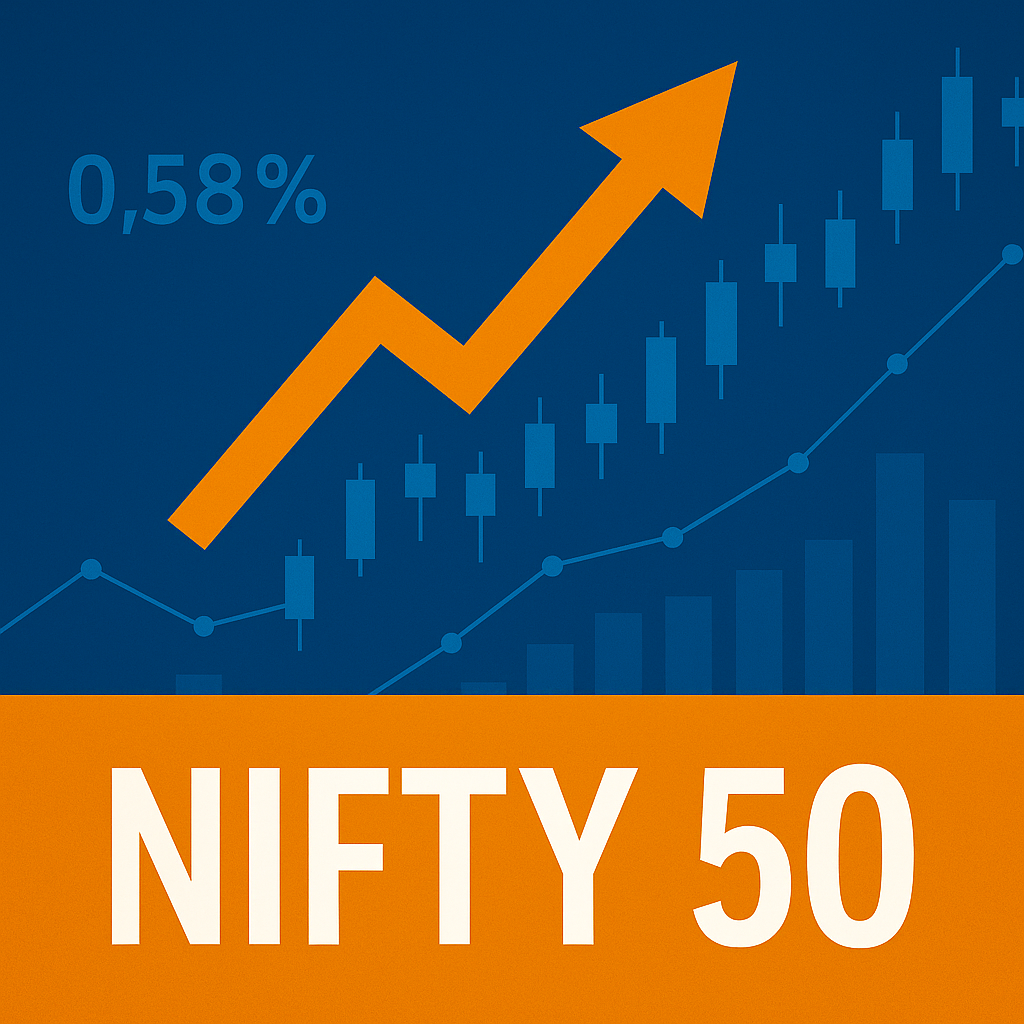
The Nifty 50, India’s benchmark stock market index, reflects the strength and trajectory of the country's top-performing companies. As of 2025, it stands as a key indicator of investor sentiment, economic performance, and market momentum. In this detailed guide, we explore the Nifty 50’s history, structure, recent performance, future outlook, and investment strategies.
1. What Is the Nifty 50?
The Nifty 50 is a diversified index comprising 50 large-cap companies listed on the National Stock Exchange (NSE) of India. It spans key sectors such as:
- Financial Services
- Information Technology
- Oil & Gas
- Consumer Goods
- Automobiles
- Healthcare, and more
It is calculated using free-float market capitalization methodology and serves as a benchmark for mutual funds, ETFs, and retail and institutional investors alike.
2. A Quick History
Introduced in April 1996 with a base value of 1000 (backdated to November 1995), the Nifty 50 has mirrored India's economic growth:
- 2000s: IT boom and economic liberalization drove growth
- 2008: Global financial crisis led to a temporary fall
- 2010s: Gradual recovery and consistent performance
- 2020–2025: Post-COVID rebound and structural reforms
From around 6,100 in 2010, it rose to 25,617 by mid-2025.
3. Current Market Status (August 2025)
As of August 4, 2025, the Nifty 50 is trading around 24,630. However, despite this high level, over 60% of NSE 500 stocks are down more than 20% from their 2024 highs.
Key Market Trends:
- Weak market breadth
- Strong performance by metal and auto sectors
- Pressure from new US tariffs on Indian goods
- Rupee depreciation (~₹87.74/USD)
Technical Indicators:
- Support: 24,500
- Resistance: 24,800 – 25,000
4. Sector-Wise Breakdown (2025)
- Financial Services: 37–38%
- Information Technology: 11–12%
- Oil & Gas: 10%
- Automotive: 7.1%
Financials dominate the index, followed by IT and energy sectors. Autos and consumer goods are emerging as major contributors.
5. Retail vs Institutional Trends
Interestingly, retail investors have been reducing exposure to Nifty 50 stocks, offloading 68% of their holdings in favor of high-risk small caps. Analysts have warned that this might lead to higher volatility in the broader market.
Meanwhile, Foreign Institutional Investors (FIIs) are cautious due to high valuations (Nifty’s P/E ~23.5), though domestic mutual funds remain net buyers.
6. Expert Predictions: What’s Next?
Short-Term (2025)
- Citi & HDFC Securities: Nifty to reach 26,000 by December 2025
- Reuters Poll: 26,500 by year-end
Mid-Term (2026)
- Motilal Oswal: Nifty may touch 28,500
Long-Term
- Some models suggest 50,000 by 2027 with continued reforms and earnings growth
7. Sector Watch: Top Performers
Financials
Benefiting from credit growth, policy news, and digital banking adoption.
Metals & Autos
Recent earnings beats from TVS Motor and Hero MotoCorp have lifted sentiment in these sectors.
FMCG & Healthcare
Acting as defensive havens amid volatility.
IT Sector
Facing challenges from US tariffs and declining foreign demand.
8. Nifty vs Small & Mid-Caps
Retail investors are increasingly chasing small-cap stocks, hoping for quick gains. However, market experts warn against ignoring the Nifty 50’s long-term stability and predictability.
Pros of Nifty Investing:
- Low volatility
- Blue-chip stability
- Strong corporate governance
9. Investment Strategy
SIP vs Lump Sum
Experts recommend continuing Systematic Investment Plans (SIPs) especially during market consolidation. Lump sum investment is advised only after sharp corrections.
Diversification Is Key
Don’t overconcentrate in one sector (e.g., IT or small caps). Spread investments across 4–5 key areas including financials, autos, FMCG, and energy.
10. Risks to Monitor
- Geopolitical Risks: US-India trade tensions
- Valuation Concerns: High P/E levels could trigger corrections
- Currency Fluctuations: A weak rupee may affect import-heavy sectors
- Global Slowdown: Especially in IT and export-heavy sectors
11. Nifty 50 Snapshot Table
| Metric | Value/Insight |
|---|---|
| Index Base Year | 1995 (launched 1996) |
| Base Value | 1000 |
| Value (Aug 2025) | ~24,630 |
| Top Sector | Financial Services (~37%) |
| Top Risk | US Tariffs and overvaluation |
| 2025 Target | 26,000–26,500 |
| Strategy | SIPs + Sector diversification |
12. Final Thoughts
As we move through the second half of 2025, the Nifty 50 remains a strong but cautious bet. With global volatility, political triggers, and valuation pressures, short-term investors must stay alert. However, long-term players can use SIPs and selective buying to build wealth gradually.
Whether you're a retail investor, a mutual fund SIP holder, or a market observer, the Nifty 50 offers insights not just into stock prices—but into India’s economy itself.
Disclaimer: This article is for informational purposes only and does not constitute financial advice. Please consult a certified financial advisor before investing.










